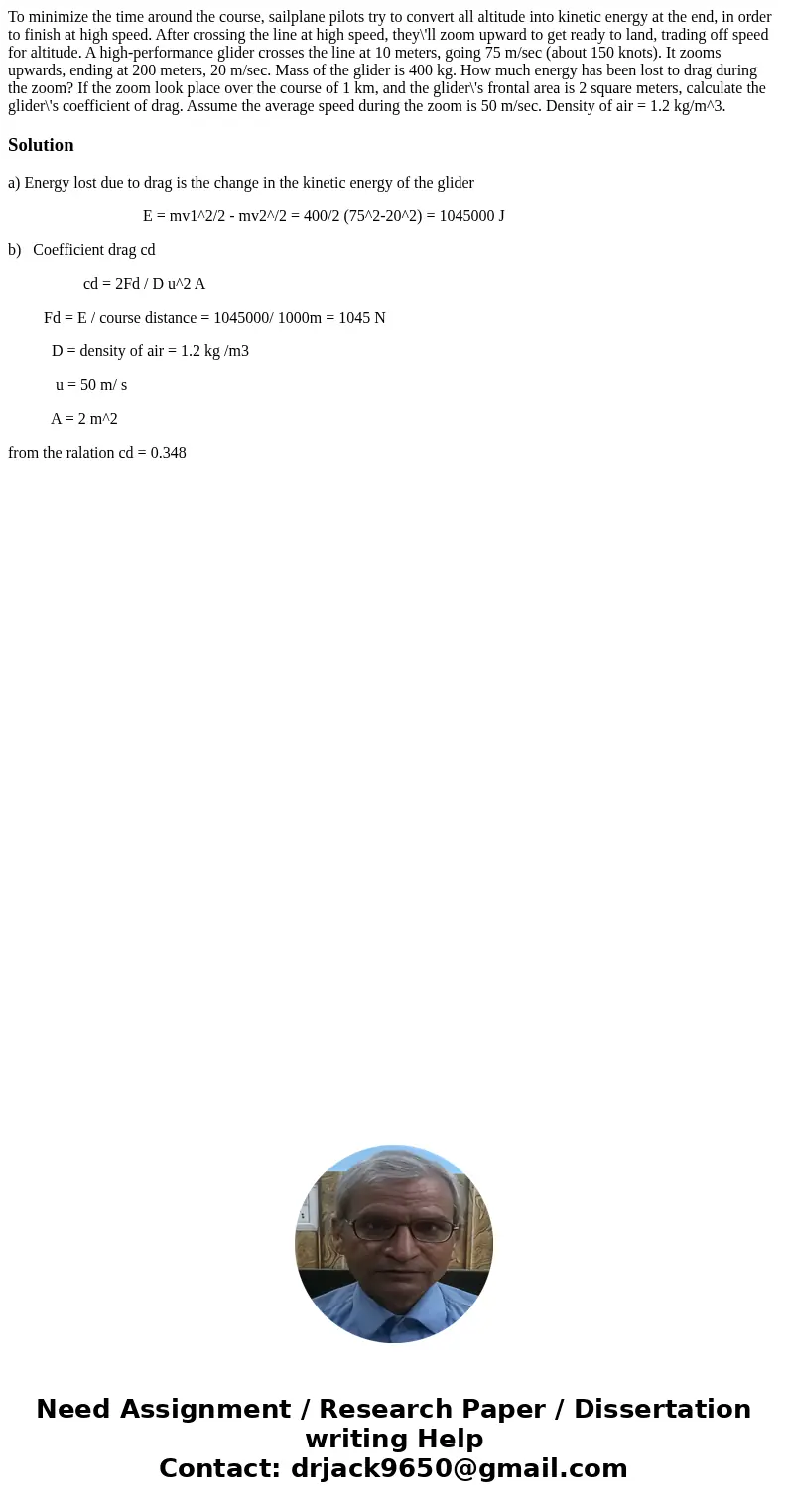To minimize the time around the course sailplane pilots try
To minimize the time around the course, sailplane pilots try to convert all altitude into kinetic energy at the end, in order to finish at high speed. After crossing the line at high speed, they\'ll zoom upward to get ready to land, trading off speed for altitude. A high-performance glider crosses the line at 10 meters, going 75 m/sec (about 150 knots). It zooms upwards, ending at 200 meters, 20 m/sec. Mass of the glider is 400 kg. How much energy has been lost to drag during the zoom? If the zoom look place over the course of 1 km, and the glider\'s frontal area is 2 square meters, calculate the glider\'s coefficient of drag. Assume the average speed during the zoom is 50 m/sec. Density of air = 1.2 kg/m^3.
Solution
a) Energy lost due to drag is the change in the kinetic energy of the glider
E = mv1^2/2 - mv2^/2 = 400/2 (75^2-20^2) = 1045000 J
b) Coefficient drag cd
cd = 2Fd / D u^2 A
Fd = E / course distance = 1045000/ 1000m = 1045 N
D = density of air = 1.2 kg /m3
u = 50 m/ s
A = 2 m^2
from the ralation cd = 0.348

 Homework Sourse
Homework Sourse